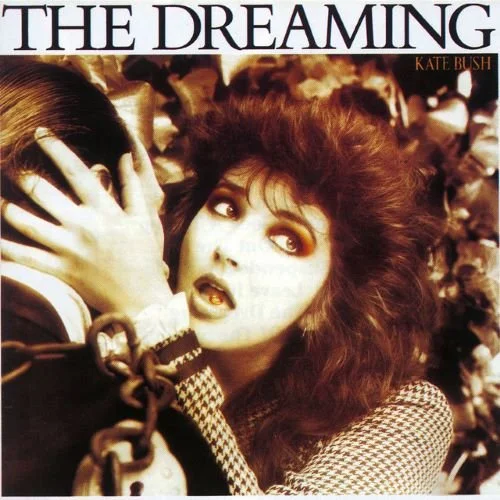FEATURE:
A Kate Bush Single That Should Have Charted Higher…
IN THIS PHOTO: Kate Bush during the photoshoot for The Dreaming/PHOTO CREDIT: Guido Harari
The Dreaming’s Title Track at Forty
__________
ONE thing I have noted about…
Kate Bush’s track, The Dreaming, is that is only reached ninety-one In Australia. A song very much about the plight of the Australian Aborigines, I am not sure why the nation did not embrace it more. Released on 26th July, 1982 – a couple of months before the album of the same name -, The Dreaming got to number forty-eight in the U.K. Considered to be a disappointing position for an artist who was more used to scoring inside the top forty – and would do when the next album, Hounds of Love, came out in 1985 -, I do feel The Dreaming should have got higher. Before expanding on this point, the Kate Bush Encyclopaedia provides interviews where Bush talked about The Dreaming. This one caught my eye:
“We started with the drums, working to a basic Linn drum machine pattern, making them sound as tribal and deep as possible. This song had to try and convey the wide open bush, the Aborigines - it had to roll around in mud and dirt, try to become a part of the earth. "Earthy" was the word used most to explain the sounds. There was a flood of imagery sitting waiting to be painted into the song. The Aborigines move away as the digging machines move in, mining for ore and plutonium. Their sacred grounds are destroyed and their beliefs in Dreamtime grow blurred through the influence of civilization and alcohol. Beautiful people from a most ancient race are found lying in the roads and gutters. Thank God the young Australians can see what's happening.
The piano plays sparse chords, just to mark every few bars and the chord changes. With the help of one of Nick Launay's magic sounds, the piano became wide and deep, effected to the point of becoming voices in a choir. The wide open space is painted on the tape, and it's time to paint the sound that connects the humans to the earth, the dijeridu. The dijeridu took the place of the bass guitar and formed a constant drone, a hypnotic sound that seems to travel in circles.
None of us had met Rolf (Harris) before and we were very excited at the idea of working with him. He arrived with his daughter, a friend and an armful of dijeridus. He is a very warm man, full of smiles and interesting stories. I explained the subject matter of the song and we sat down and listened to the basic track a couple of times to get the feel. He picked up a dijeridu, placing one end of it right next to my ear and the other at his lips, and began to play.
I've never experienced a sound quite like it before. It was like a swarm of tiny velvet bees circling down the shaft of the dijeridu and dancing around in my ear. It made me laugh, but there was something very strange about it, something of an age a long, long time ago.
Women are never supposed to play a dijeridu, according to Aboriginal laws; in fact there is a dijeridu used for special ceremonies, and if this was ever looked upon by a woman before the ceremony could take place, she was taken away and killed, so it's not surprising that the laws were rarely disobeyed. After the ceremony, the instrument became worthless, its purpose over. (Kate Bush Club newsletter, October 1982)”.
There are controversial aspects of the records, no less the inclusion of Rolf Harris. Whilst a respected artist at the time, his involvement does taint The Dreaming now (even though he is on didgeridoo and not vocals). One of Bush’s most interesting and important songs, I don’t think it was a case of her jumping on a cause or trying to write something social or political to break away from this idea of (her being) kooky and lacking in depth. I really like the track! Whilst not an obvious single, it does convey important messages and it should have done better. I am not sure whether her fans expected something a bit more akin to Babooshka (Never for Ever) or Wow (Lionheart). Bush is an artist who was always going to change and not stick to the same sound. If not particularly commercial, The Dreaming did highlight the fact that she was a serious artist who could not be pigeon-holed. You do hear the track played on the radio now and then, though it gets far less airplay than Bush’s more popular singles. Ahead of its fortieth anniversary on 26th July, I wanted to write another feature about a terrific song. I have already highlighted it lyrics and the way Bush deploys her words to create such vivid and tangible scenes. With incredible sounds and voice all in the mix, The Dreaming is a song that I think was ahead of its time. If audiences were not too embracing of The Dreaming back in 1982, I feel it would fair much better forty years later. To me, The Dreaming should have been…
A top forty success.


